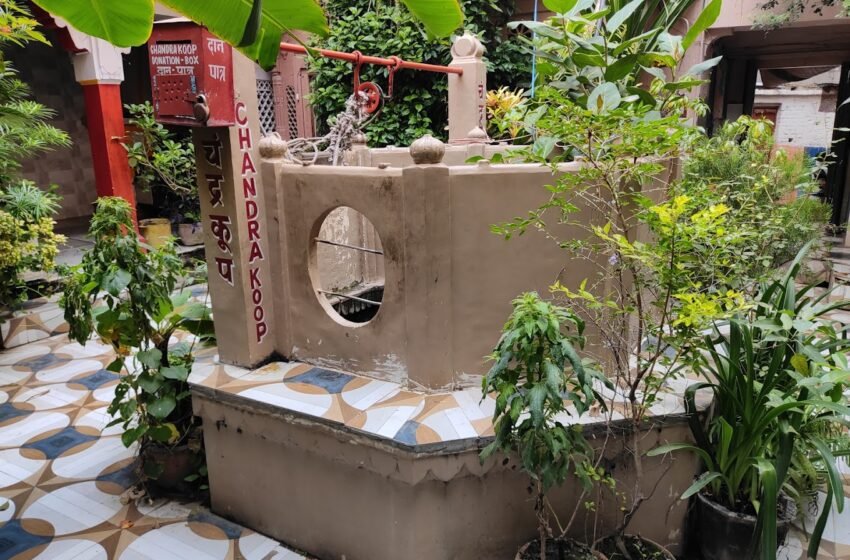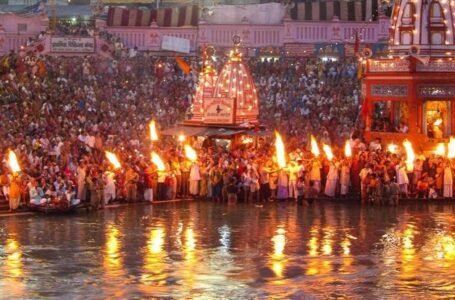Chandrakoop Well: The Sacred Place of Lunar Blessings in Varanasi

As one of the many labyrinths of spirituality and history where Varanasi stands, Chandrakoop Well is the only one of its kind. It is located within the premises of the Kashi Vishwanath Temple complex. An ancient well, it finds a unique place in Hindu religious traditions. Chandrakoop Well is believed to be steeped in cosmic energy and lunar significance and is thus considered a place of reverence, where mythology, devotion, and rituals meet.
It is unfairly overlooked, with the constant stream of visitors preferring other tourists more popular in Varanasi, and yet its history and association, steeped in mythology, merit a close investigation for anyone interested in the spiritual and cultural embroidery of the city. “Chandra” means moon, and “koop” means well, and therefore, Chandrakoop is given this name because of its ties to all lunar deities and other celestial phenomena.
History of Chandrakoop Well
Chandrakoop Well’s history is shrouded in antiquity, quaintly interlaced with Varanasi’s development as a holy city. Many texts and local legends claim that King Chandrasena, an ardent devotee of Lord Shiva, commissioned the well with hopes of blessings from above to banish his sins and ensure prosperity for his kingdom.
The various sources of history also declare that Chandrakoop was established as part and parcel of some broader religious initiatives to purify the waters of Varanasi. The offerings were said to have included sacred waters from prominent rivers, milk, honey, and other religious substances that were offered to Lord Shiva. It was believed that this mixture gave it miraculous abilities to cleanse.
There is also mention of Chandrakoop Well, which became popular among medieval pilgrims, granting seekers an opportunity to complete their sacred passage in Varanasi. Bathing and giving offerings at Chandrakoop became part and parcel of one’s desire for liberation (moksha) and offerings to the lunar deities.
Chandrakoop Well suffered oblivion over the ages due to invasions and political turmoil. It was Queen Ahilyabai of Holkar, who now ruled Indore, who was very much engaged in a revival of the yet more noticeable holy places of Varanasi during the 18th century. Chandrakoop still holds the importance of sacredness today, attracting thousands of pilgrims seeking that instantiation.
Mythological Significance of Chandrakoop
Mythological stories that connect to the concept of the Chandrakoop Well reflect Hindu cosmology and lore. Most prominent among these is probably the tale of King Daksha’s sacrificial ritual when the moon god, Chandra, was cursed with decay and death. To redeem himself, Chandra performed penance in several sacred places of pilgrimage, including Kashi, from which he sought forgiveness from Lord Shiva.
Having been moved by Chandra’s devotion, Lord Shiva lifted part of the curse so that the moon could now wax and wane, moving from one phase to another. It is said that the well is a memorial of this penance and reparation that symbolizes the moon’s relationship with Shiva and the cosmic order.
Besides being associated with the moon, this sacred well is intimately connected with the idea of soma, the celestial nectar of immortality. Soma is an integral part of Vedic traditions with a close connection to the moon, and it is stated that Chandrakoop embodies the essence of this celestial liquid. The water from Chandrakoop is generally considered by pilgrims to contain the power of soma and is highly potent for spiritual purification purposes.
Architectural and Spiritual Features
Chandrakoop Well may not be a very grand structure of its kind, but it does gain ground for its elevated spiritual sacredness in the sacred geography of Varanasi. Built with stone, the well is cylindrical in structure and has elaborate carvings and inscriptions reflecting the artistic heritage of its time. A profusion of smaller shrines and sculptures of lunar deities and celestial symbols grace the area with divine regard.
Holy water is collected by pilgrims in water pots for taking back home as tokens of divine blessing and offerings include sweetened milk, flower petals, and prayers recited, alongside hymns invoking the moon and Lord Shiva. They are believed to rid the soul of all obstacles and restore solitude and mental tranquillity.
Its location among the vast complex of the Kashi Vishwanath Temple further augments its sanctity. Pilgrims visiting the temple frequently include visiting the well as part of their itinerary, following the sacred circular of prayers combining celestial and terrestrial.
Cultural and Religious Importance
Chandrakoop Well occupies a unique place within the city’s cultural as well as religious life: not only the Ganges constitute the central source of spirituality in Varanasi. Besides the latter, Chandrakoop adds the dimension of the moon to the cosmic conceptions of the city – its associations with the moon fully cohere with Hinduism and speaks about cycles of time, renewal, and transcendence.
The well is also part of certain rituals and celebrations related to the moon and other celestial phenomena. On full moon nights (Purnima), devotees throng Chandrakoop to hold special prayers and oblations, beseeching harmony and balance in life. These rituals point to a central theme in Hindu thought: the play of cosmic forces against human existence.
Apart from being a religiously significant area, Chandrakoop plays a role in the multilevel identity of Varanasi as an earthly, celestial, and divine city. Its existence further consolidates the fact that Varanasi is a mini-universe where every facet of life is celebrated and hallowed.
Preservation and Challenges
Like many ancient structures in Varanasi, Chandrakoop Well faces urbanization, environmental degradation, and the pressures of tourism. The water quality of the well has deteriorated over the years due to pollution and neglect, raising concerns among devotees and conservationists. Recent years have seen the effort to preserve the well grow, with local authorities and heritage organizations working on its physical and spiritual restoration.
Modern initiatives, like the Kashi Vishwanath Corridor Project, have revived the attention of Chandrakoop. The project aimed to make the sacred sites within the city more accessible and visible. So, places like Chandrakoop will continue to inspire generations in the future.
Conclusion
Chandrakoop Well, a rich reservoir of the spiritual and cultural heritage of Varanasi, reflects a history that is strongly rooted in mythology and devotion-a connection of the city towards the divine. Being the symbol of lunar blessings and cosmic balance, Chandrakoop reminds us of the fine interplay between the celestial and the terrestrial, which happens to be the core of Hindu philosophy.
More than just a ritual, the pilgrimage and searching for such space is, for many people, a call to meet with eternal rhythms. As we fight to save and rejoice in these holy places, Chandrakoop endures as an icon of faith, hope, and spiritual transformation.


